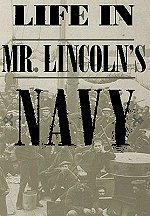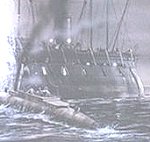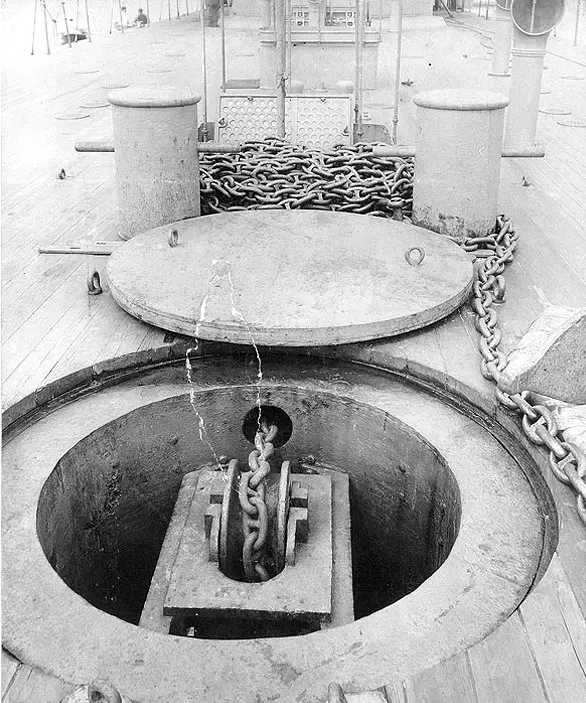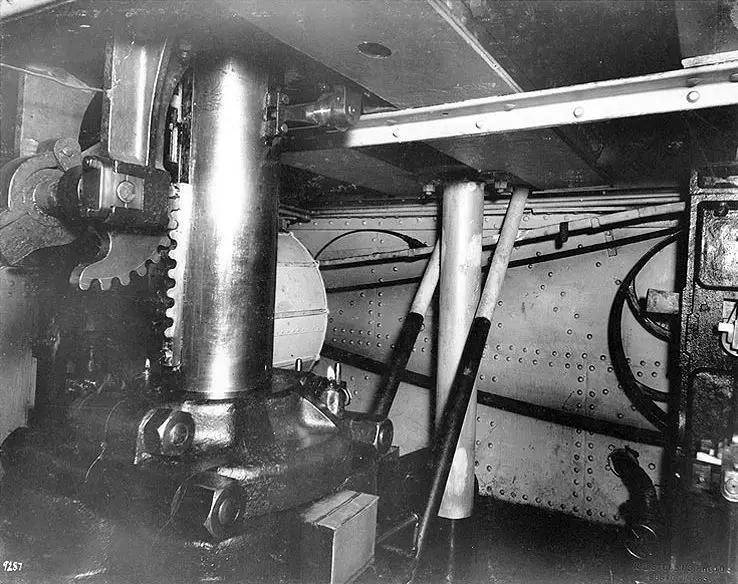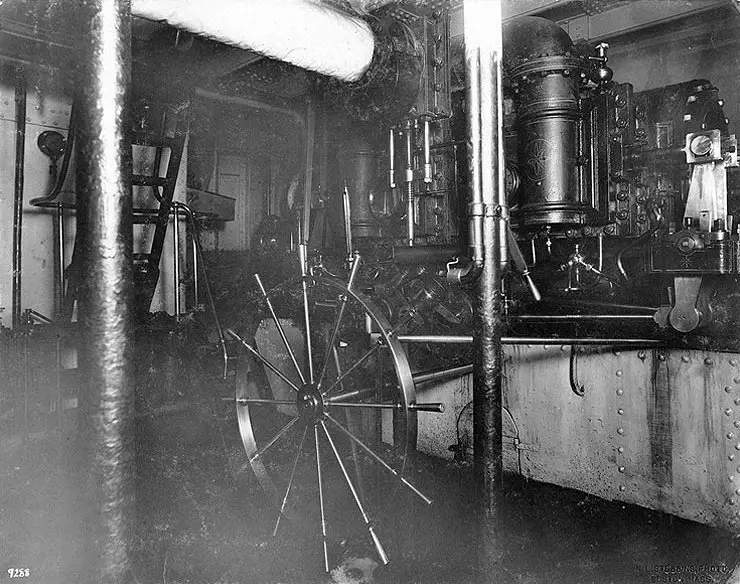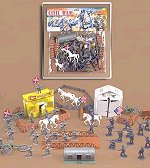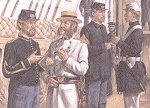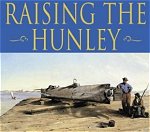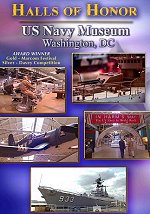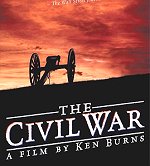USS Catskill (1863-1901)
USS Catskill , a 1335-ton Passaic class monitor, was built at Greenpoint, New York. She was commissioned in late February 1863 and almost immediately sent to join the South Atlantic Blockading Squadron off Charleston, South Carolina. Catskill was damaged by Confederate gunfire during the 7 April 1863 attack on Fort Sumter that demonstrated both the strengths of well-defended fortifications and the limitations of monitor-type ironclads. The ship participated in renewed bombardments of Charleston's defenses in July-September and was again damaged. Her commanding officer, Captain George W. Rodgers, was killed in action on 17 August 1863 during one of these battles.
Catskill remained on duty in the vicinity of Charleston during the rest of the Civil War. She destroyed the grounded blockade runner Prince Albert off Fort Moultrie on 9 August 1864. When Charleston fell on 17-18 February 1865, Catskill captured blockade runners Celt and Deer when they went aground trying to escape to sea. In July 1865, some months after the conflict's end, the monitor left Charleston and went to Philadelphia, Pennsylvania, where she was decommissioned.
Catskill was briefly renamed Goliath in June-August 1865, while laid up. She was again active in 1876-77, operating along the Atlantic Coast, but was "in ordinary" for more than two decades after that. Recommissioned in April 1898, during the Spanish-American War, Catskill was assigned to coast-defense service off New England.
Officers posing on deck and atop the turret, while the ship was in Charleston harbor, South Carolina, in 1865. The Commanding Officer, Lieutenant Commander Edward Barrett, is seated on the turret, in center.
Note awning spread over the turret and conning tower, ship's bell mounted on the turret side, marks from Confederate shot hits on the turret armor, and additional armor plate laid on the deck.
Guns on field carriages are 12-pounder Dahlgren howitzers. Turret gun to the right is a XI-inch Dahlgren smoothbore. The other turret gun is a XV-inch Dahlgren smoothbore.
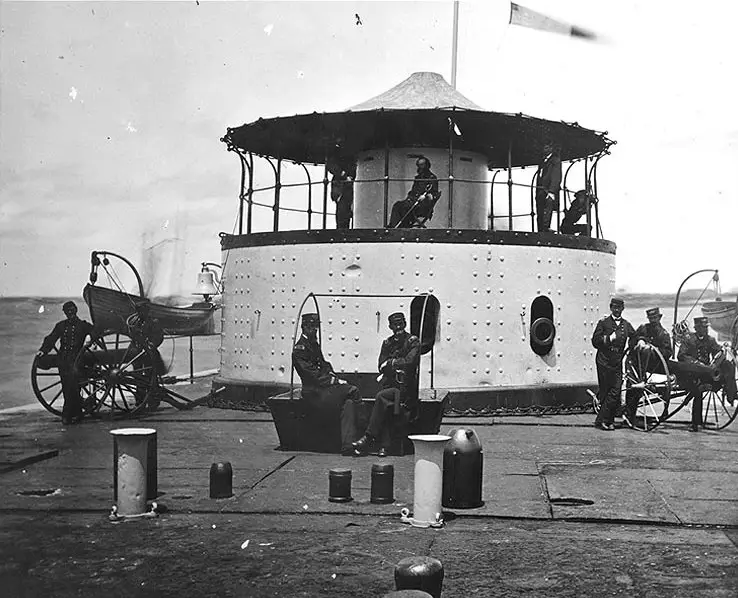
View of the ship's propeller well, with cover removed, photographed by N.L. Stebbins, Boston, Massachusetts, circa 1898.
Note tiller at left, with rudder chains running across the deck
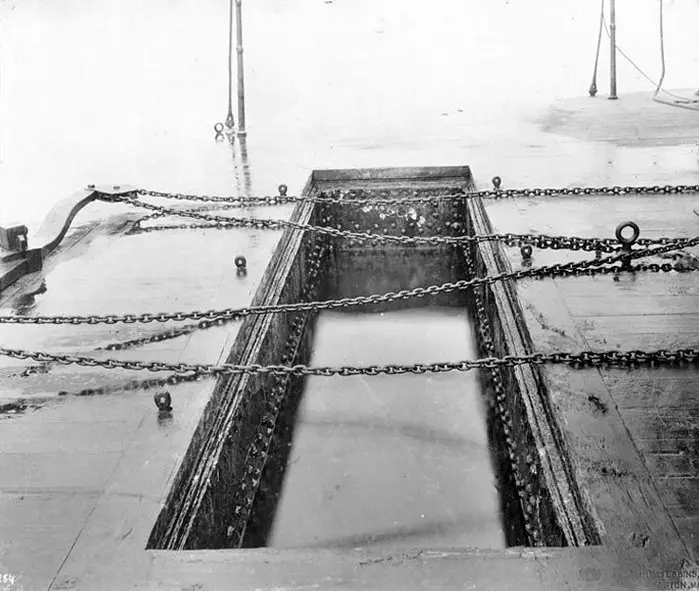
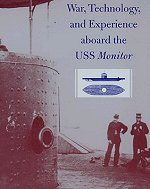
War, Technology, and Experience aboard the USS Monitor
The experience of the men aboard the Monitor and their reactions to the thrills and dangers that accompanied the new machine. The invention surrounded men with iron and threatened their heroism, their self-image as warriors, even their lives
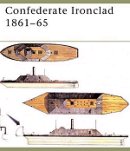
Confederate Ironclad 1861-65
Every aspect of Confederate ironclads is covered: design, construction, armor, armament, life on board, strategy, tactics, and actual combat actions
Kindle Available
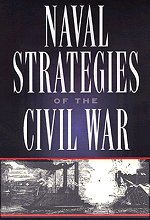
Naval Strategies of the Civil War: Confederate Innovations and Federal Opportunism
Compare and contrast the strategies of the Southern Secretary of the Navy, Mallory, against his rival in the North, Welles. Mallory used technological innovation and the skill of individuals to bolster the South's seapower against the Union Navy's superior numbers
